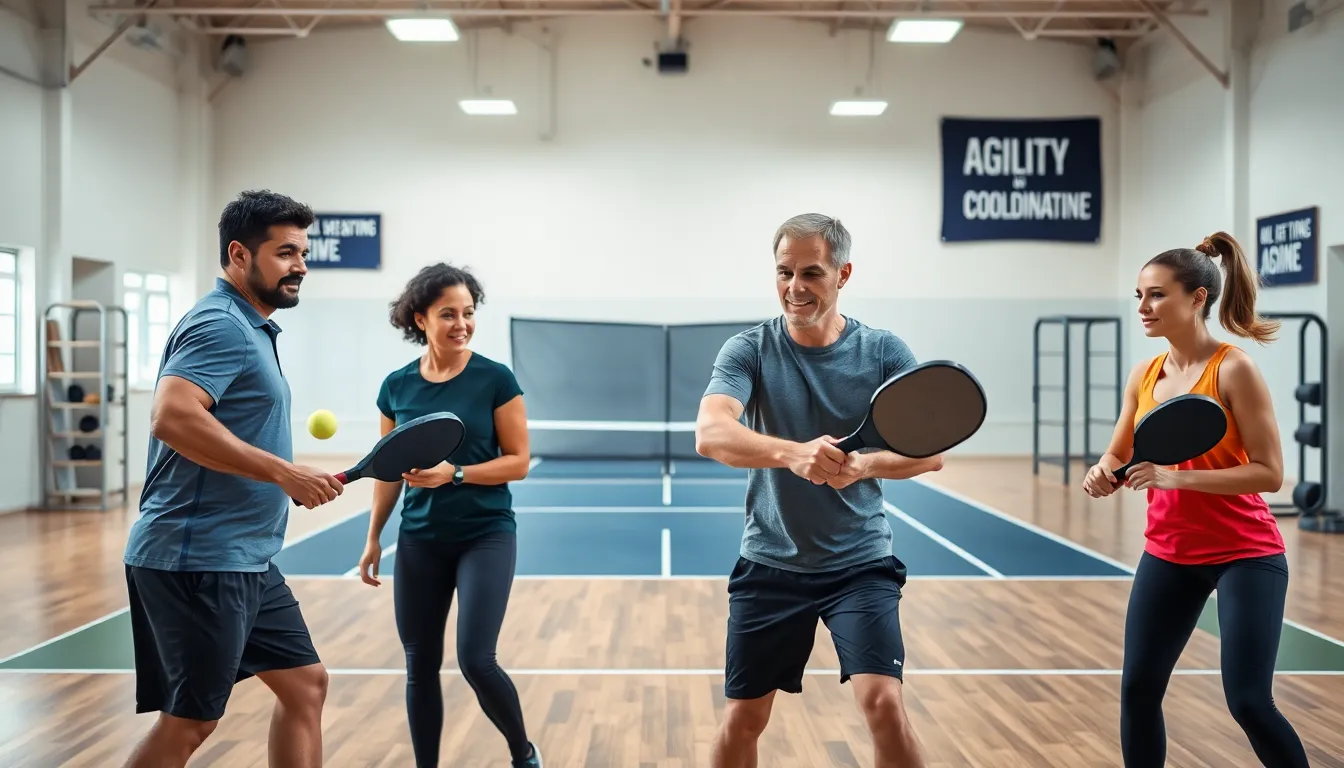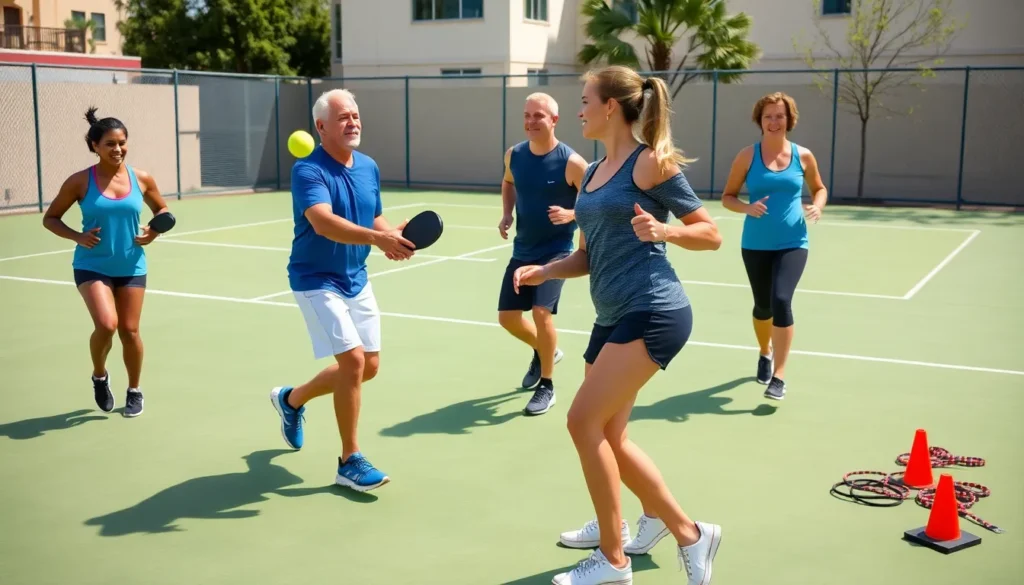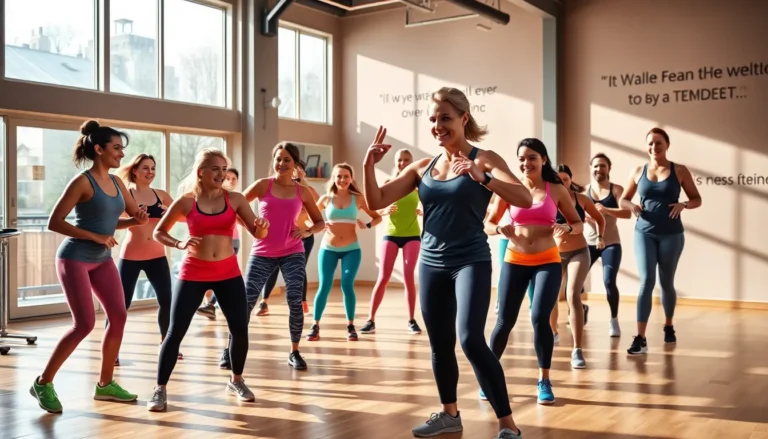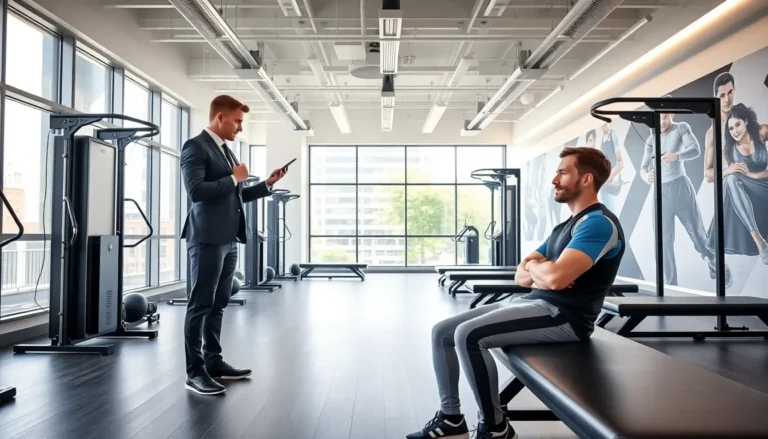Pickleball isn’t just a sport: it’s a frenzy of fun that sneaks in cardio, strategy, and socializing. Imagine dinking your way to fitness while reveling in the thrill of competition, and, yes, racking up some serious laughs along the way. But before you grab that paddle and head to the court, you need to understand the physical demands of this whimsical game. So, let’s jump into how to prime your body with pickleball fitness training, turning your every serve and volley into a showcase of athletic prowess. Get ready to ace your game and leave your opponents in the dust.
Table of Contents
ToggleUnderstanding Pickleball and Its Physical Demands

Pickleball combines elements of tennis, badminton, and table tennis into an exhilarating game that requires agility, speed, and focus. Players engage in short bursts of intense activity, often covering 20-30 feet in quick sprints to return shots. With quick lateral movements and fast reactions, it’s clear that pickleball is not just about finesse: it’s a full-body workout that challenges endurance and coordination.
Understanding these physical demands is crucial for players of all levels. The sport requires cardiovascular stamina for those long rallies, strength for powerful serves, and flexibility to reach those tricky shots. Players must also remember the importance of mental agility. Anticipating an opponent’s next move is just as vital as being physically prepared. Incorporating proper fitness training builds muscle memory, enhancing mobility and overall performance on the court.
Key Fitness Components for Pickleball Players
To truly excel in pickleball, players should focus on five key fitness components:
1. Cardiovascular Endurance
This aspect aids players in maintaining energy throughout matches. Longer rallies demand more stamina, so incorporating aerobic exercises into training routines is crucial.
2. Strength Training
Strength plays a pivotal role in every shot, especially serves and volleys. Targeting core, leg, and arm muscles will enhance power and stability.
3. Flexibility
Pickleball involves reaching, pivoting, and quick directional changes. Flexibility reduces the risk of injury and allows players to move easily on the court.
4. Agility
Fast footwork is essential for quick positioning. Agility drills improve balance and coordination, allowing for efficient movement.
5. Balance
Maintaining balance while executing shots is vital. A solid balance helps players recover quickly and remain poised during intense exchanges.
Focusing on these components will enhance overall performance and enjoyment of the game.
Essential Exercises for Pickleball Fitness Training
With a clear understanding of fitness components, it’s time to focus on exercises that cater specifically to pickleball:
1. Interval Running
This drill mimics gameplay by involving short bursts of high-intensity running followed by rest periods. It helps build cardiovascular fitness and simulate real match scenarios.
2. Resistance Band Workouts
Resistance bands help strengthen the shoulders, arms, and core. Exercises like band pull-aparts or shoulder presses can improve crucial muscle groups used in gameplay.
3. Lunges and Squats
Building leg strength enhances power on the court. Incorporate forward and lateral lunges, along with squats to develop explosive movement.
4. Core Stability Exercises
Planks, Russian twists, and bridges reinforce core muscles essential for maintaining balance and generating power during shots.
5. Flexibility Routines
Incorporate yoga or dynamic stretching into regular training sessions to enhance flexibility and prevent injuries. This can significantly affect performance and recovery.
Creating a Balanced Training Regimen
Creating a balanced training regimen requires a combination of strength, endurance, and flexibility workouts. Players might split their weekly schedules into various focus areas:
- Monday: Strength Training, Focus on arms and core.
- Tuesday: Cardio, Engage in interval running or cycling.
- Wednesday: Agility and Flexibility, Incorporate agility drills and yoga.
- Thursday: Endurance Training, Longer sessions of running or an aerobic workout.
- Friday: Skill Practices, Time on the court honing techniques such as serves and volleys.
- Saturday: Rest or light activities, like casual pickleball games or recreational tennis.
- Sunday: Recovery, Gentle stretching or restorative yoga.
This regimen not only promotes overall physical health but also keeps the training exciting and engaging.
Injury Prevention Strategies
Injuries can be a sidelining reality for any athlete. To keep pickleball players in the game, implementing effective injury prevention strategies is vital:
1. Proper Warm-up and Cool-down
A comprehensive warm-up prepares the body for activity. Consider dynamic stretches to activate muscles. After play, cool down with static stretches to aid recovery and maintain flexibility.
2. Listen to Your Body
Pay attention to pain signals. Overexertion can lead to injuries: rest when necessary.
3. Footwear Matters
Investing in court-appropriate footwear significantly reduces the risk of ankle and foot injuries. Proper shoes provide support and traction, essential for fast movements on the court.
4. Hydration
Staying hydrated supports overall performance and prevents cramping. Players should drink water before, during, and after matches.
Tracking Progress and Adapting Training
Track your fitness journey by maintaining a training journal. Document workouts, monitor improvements, and celebrate small victories. This not only motivates but also identifies areas needing attention.
Consider using fitness apps that can provide updates on cardiovascular fitness, strength levels, and agility metrics. As proficiency increases, adapt training protocols accordingly. Elevate intensity or change exercises to challenge muscles and skills. Keeping the workouts fresh helps prevent plateaus and keeps training enjoyable.








